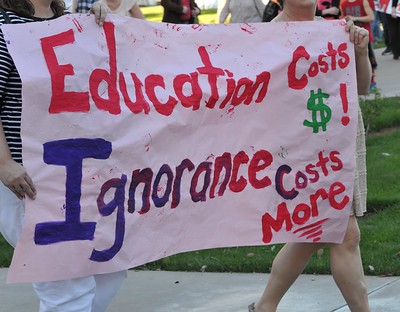Recently, the Federal Reserve Bank of Philadelphia published a discussion paper on the pandemic’s potential long-term financial effects on higher education institutions. Its prediction aren’t pretty.
According to the report, higher education is in a vulnerable financial state, similar to the Great Recession. In fact, average state spending (in real dollars) on higher education in 2020 was approximately the same as it was in 2013. The institutions most negatively affected by the pandemic? Historically Black Colleges and Universities (HBCU) and community colleges.
According to the Philly Fed, it predicts state appropriations to decrease by $17B-$30B between 2020 and 2025. However, the funding losses won’t stop at state appropriations. It also predicts losses of between $70B-$115B when considering all revenue sources.
The news isn’t all bad, however. The Philly Fed predicts that public institutions will experience revenue losses of between 0% and 25% through 2025. Community colleges have the distinct advantage of having diverse revenue sources as well as taxing authority. While student enrollment may be slow to recover and state dollars may shrink, the property tax revenue will continue to grow.
Higher education operating costs will rise
The report throws up a few red flags. First, the operating costs in higher education have increased faster than the rate of inflation for years. This fact alone should be worrisome. As schools like Washtenaw Community College struggle to make ends meet, freeing operational dollars to pay bills becomes more important. Colleges need operational dollars to flow freely, but that’s hard to do when the administration siphons off operational dollars to pay debt. (Remember, debt is not an operating expense.)
Currently, inflation is growing at an alarming rate, in part, due to the pandemic. When operational expenses routinely exceed the rate of inflation, it will not take long for the school to encounter financial trouble. Preserving operational funds for actual operations becomes essential. That means eliminating debt. (Ask the voters!) It also means reducing expenses and avoiding revenue-backed debt for construction projects.
To date, neither WCC’s current administration nor its Board of Trustees have demonstrated a clear understanding of financial risk of overspending. Nor do they seem to understand the impact of taking on additional revenue-backed debt.
Reducing operational costs – rather than attempting to create new revenue streams – is the best way to ensure WCC’s long-term financial stability. But not all operational costs are created equal. Studies show that increasing spending on instruction improves student outcomes. Cutting instructional costs (or increasing tuition and fees) produces a worse outcome for students and increases their debt.
Instead, the better way to reduce operational costs is to reduce the cost of the college administration. While that may mean eliminating a Vice President or five, it also helps to ensure the financial stability of the college. Another way to maximize operational dollars is by refinancing existing debt.
The WCC Board refuses to ask the taxpayers for help
The current Washtenaw Community College Board of Trustees is philosophically opposed to asking the taxpayers to take on debt for construction projects. Even when it is in the best interest of the institution. Instead, they prefer to pay long-term debt by reducing the operational funds available to the college. Under the circumstances, however, it may be necessary for the Board of Trustees to rethink this foolishness.
And there’s always the Rule of Holes: When you discover that you’re in a hole, your first move should be to stop digging. In WCC’s case, if the Trustees’ unwillingness to seek taxpayer support for bond issues persists, they should stop borrowing. At least until they either modify their position on tax-backed bonds, or until the college’s revenue picture improves.
2007 was not the time to take on debt for the Fitness Center, but the Trustees did that anyway. Failure to seek tax-backed bonds for the project has resulted in multi-million-dollar losses today. They are poised to make the same mistake again by selling revenue backed bonds to pay for the “Advanced Transportation Center” and the Student Center rehab.
There is no time like the present for the Trustees to start looking realistically at the combination of lower state appropriations, increased operational costs and lower enrollments. These circumstances do not bode well for either borrowing or building.
Photo Credit: Andy Blackledge , via Flickr





































